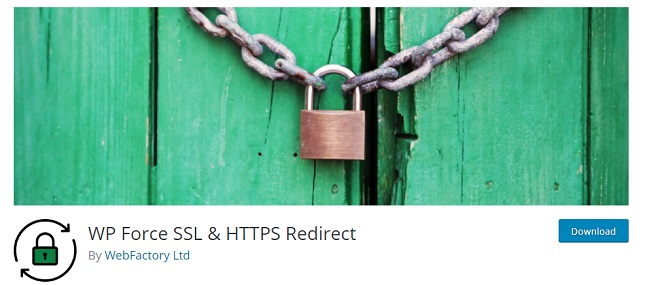https and Effect on Rankings
This time we’ll shed light on the importance of taking reasonable steps to move your http blog to https.
Table of Contents
In recent years, Google started using https by default for Gmail and encrypted search. It was followed by the active usage of this https encryption by other major communication websites and not only.
As a result, those sites adopting https or switching from http to https started to meet higher security standards, record higher ranks on search ranking algorithms, not to mention other benefits.
Hence, Google started using https or secure http as a ranking signal and encouraging blogs and websites to join a community of https.
Well, if Google gives preference to https for search engine optimization rankings, then, it is simple to assume, that migrating from http to https will do no harm to your blog’s SEO rankings and will even increase it.
Yes, if we try to be fair, we’ll confess that it takes https based websites more loading time which, as you can guess, is not so preferable for SEO.
But there is a wise solution not to suffer a lot from heavy loading.
You can choose to encrypt only those blog pages which transfer confidential or sensitive data.
Alternatively, you can use a high quality and performance host to solve the issue.
In addition, search engines, including, of course, Google, love trusted and secured websites.
And since https is a way to keep your blog or website secure using SSL for secure data transfer, your chances are higher to appear in the top positions of search engine rankings.
Now, if you are influenced by “https everywhere campaign” of Google and are looking to move your http blog to https, we’ll help you to go through the required steps to do it.
Backup your blog
Whenever you are making a considerable change in your blog or website, be sure to have a reserved backup of it to make the process smooth and secure. This is one of the important steps to move your http blog to https without any unexpected losses in the future.
Setup and activate SSL certificate
Buy and activate SLL if you have not any yet.
SLL or Secure Sockets Layer is a modern security technology responsible for the encryption link between a server and a browser. It guarantees the confidentiality and security of the data transmitted.
Sometimes, it’s the hosting you are using that offers you a free or paid certificate. We recommend you to buy a certificate from your hosting company so that you will not need to get stuck in complicated installation and other processes required to make SLL certificate go smooth with your site.
However, you are free to look for a convenient solution among other certificate providers as well. Acquire a certificate matching your needs and let SSL work on the top of your https for more security.
Update your blog URL
n order to update your WordPress blog or site URL, you need to go to Settings, General, where you will find WordPress address (URL) and Site Address (URL).
Now, if you have already installed SSL certificate, you need to take care of WordPress SSL redirection from http to https. You can do this manually, by copying and adding the below mentioned code in .htaccess file.
RewriteEngine On
RewriteCond %{SERVER_PORT} 80
RewriteRule ^(.*)$ https://www.mywebsite.com/$1 [R,L]
Be sure to add your own site or blog’s URL instead of www.mywebsite.com.
If your blog is powered by Nginx which does not share .htaccess type potential, you need to use the code below:
server {
listen 80;
server_name yoursite.com www.yoursite.com;
return 301 https://mywebsite.com$request_uri;
}
Use https redirection plugins
If you are clueless about WP related coding controls and want a simpler way around to move your http blog to https, you can rely on multiple redirection plugins available in WordPress repository of plugins.
Easy HTTPS Redirection:
Easy HTTPS Redirection is one of the easy to use plugins compatible with any WP based blog or website. It can be one of the successful steps to move your http blog to https and redirect your blog visitors when they try to access non http version. For example, if they type http://yourblog.com in their browsers, it will automatically take them to https://yourblog.com so that you will not lose a single potential visitor.
Redirection:
Redirection is another lightweight and simple plugin that literally forces your site to use https protocol all the time. This plugin is used to keep things as simple and accessible as possible.
301 Redirects – Easy Redirect Manager:
It is one of the trusted and actively installed 301 Redirects – Easy Redirect Manager ready to help you along the redirection process. It comes with a proper installation guide to follow so that you can make the needed redirection effectively.
WP Force SSL:
It is another reliable yet lightweight and admin optimized redirection plugin that does not expect you to take the initiative at coding and development. You will be able to organize the transfer of http traffic to https without complex coding procedures behind.
All you need to do in order to make this plugin work for you is to acquire SSL certificate and adjust your URLs from WP Admin Dashboard, Settings, General.
Select the pages you want to redirect
Choose the plugin that grants you with the total control to use redirection for specific or exclusive pages which require higher security. It can be a login page, checkout page, user account page, shopping cart, etc.
You will be able to find the needed functionality with some of the above discussed plugins, including WordPress HTTPS/SLL and Easy HTTPS Redirection.
Update your SSL certificate whenever needed
If your SSL certificate appears to be old dated, it will result in https marked with a red line through it. Hence, your blog will be showcased as an untrusted resource in the user’s browser.





